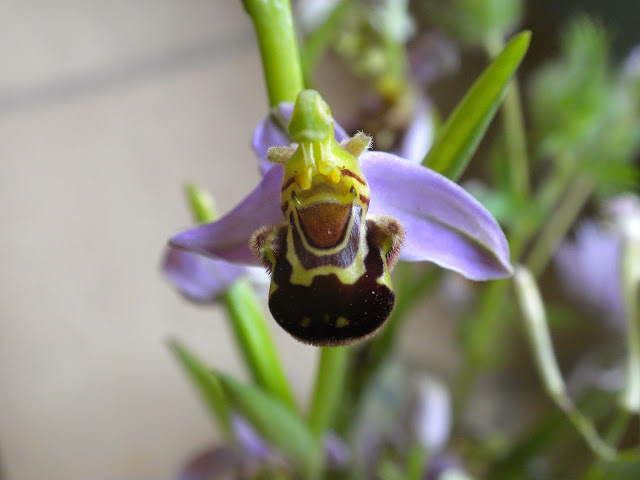...and further your species.
The other morning while hanging out the washing I spied an interesting flower bobbing in the grass. It had three mauve petals and was being plundered by a bumble bee. Or so it seemed.
On closer examination the bee turned out to be part of the flower which was a tiny orchid.
It seems that this field orchid, Ophrys apifera, has evolved a cunning technique for the survival of its species.
Otherwise known as the bee orchid, (vesparia in Italian), this tiny flower displays a lip which closely resembles a bumble-bee; red-brown with yellow markings and even a hint of fuzz.
Although this orchid can self-pollinate in its northern range, in our part of the world it ensures its own survival through subterfuge.
The scent of the flower imitates that of a female of the Eucera bumble bee species, hence attracting the male, while its appearance fools the male bumble bee into attempting to mate with the 'female'.
The frustrated bee then moves on to other plants and other pseudo-matings thereby completing the cross-pollinating.
Ain't nature wonderful.
Here is an extract from a documentary by Attenborough which illustrates the whole curious story.






The "How To Fool A Bumble Bee" report of the 28th May,2015,is a marvellous example of how this small field orchid has been able to ensure its own survival, by subterfuge, in the Le Ripe location,midway between Firenze and Siena.Natural processes are capable of bringing about wonderful adaption.
ReplyDelete